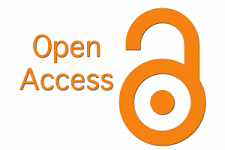Challenges And Strategies In Preventing Neglect, Homelessness, And Deviant Behaviour Among Minors
Keywords:
minors, prevention strategies, neglect, homelessnessAbstract
This article explores the multifaceted issues surrounding minors experiencing neglect, homelessness, and deviant behaviours, including drug and alcohol abuse. It highlights the critical role of personalized approaches in prevention, considering social, biological, and psychological factors. The paper emphasizes the necessity of collaboration between law enforcement, educational institutions, medical organizations, and psychological services to rehabilitate affected minors and reintegrate them into society. Additionally, it examines the rising prevalence of adolescent substance abuse and its societal impact, the challenges of rehabilitation in correctional institutions, and the vital importance of preventive measures in fostering positive behavioural changes.
References
Moffitt, T. E. (1993). Adolescence-limited and life-course-persistent antisocial behavior: A
developmental taxonomy. Psychological Review, 100(4), 674–701.
https://doi.org/10.1037/0033-295X.100.4.674
Barnes, G. M., Reifman, A. S., Farrell, M. P., & Dintcheff, B. A. (2000). The effects of parenting
on the development of adolescent alcohol misuse: A six-wave latent growth model. Journal of
Marriage and Family, 62(1), 175–186. https://doi.org/10.1111/j.1741-3737.2000.00175.x
Dishion, T. J., & Patterson, G. R. (2006). The development and ecology of antisocial behavior in
children and adolescents. In D. Cicchetti & D. J. Cohen (Eds.), Developmental psychopathology,
Vol. 3: Risk, disorder, and adaptation (pp. 503–541). John Wiley & Sons.
Hawkins, J. D., Catalano, R. F., & Miller, J. Y. (1992). Risk and protective factors for alcohol and
other drug problems in adolescence and early adulthood: Implications for substance abuse
prevention. Psychological Bulletin, 112(1), 64–105. https://doi.org/10.1037/0033-
112.1.64
Kumpfer, K. L., & Alvarado, R. (2003). Family-strengthening approaches for the prevention of
youth problem behaviors. American Psychologist, 58(6–7), 457–465.
https://doi.org/10.1037/0003-066X.58.6-7.457
Siegel, L. J., & Welsh, B. C. (2018). Juvenile delinquency: Theory, practice, and law (13th ed.).
Cengage Learning.
Thornberry, T. P., Krohn, M. D., Lizotte, A. J., & Chard-Wierschem, D. (1993). The role of
juvenile gangs in facilitating delinquent behavior. Journal of Research in Crime and
Delinquency, 30(1), 55–87. https://doi.org/10.1177/0022427893030001004
Ungar, M. (2004). The importance of parents and other caregivers to the resilience of high-risk
adolescents. Family Process, 43(1), 23–41. https://doi.org/10.1111/j.1545-
2004.04301004.x
World Health Organization (WHO). (2018). Adolescent mental health. Retrieved from
https://www.who.int/news-room/fact-sheets/detail/adolescent-mental-health
Van Ryzin, M. J., Fosco, G. M., & Dishion, T. J. (2012). Family and peer predictors of substance
use from early adolescence to early adulthood: An 11-year prospective analysis. Addictive
Behaviors, 37(12), 1314–1324. https://doi.org/10.1016/j.addbeh.2012.06.020
Jamalova N. U. POSSIBILITIES OF USE OF FOLK PEDAGOGY IN THE FORMATION OF
INDIVIDUAL AND PERSONAL CHARACTERISTICS OF STUDENTS //Journal of
Integrated Education and Research. – 2022. – Т. 1. – №. 6. – С. 191-193.
Turayevich U. R., Qahramonovich H. N. ZAMONAVIY DUNYONING AXLOQIY
MUAMMOLARI-ZO ‘RAVONLIK FALSAFASI //Ustozlar uchun. – 2024. – Т. 57. – №. 4. –
С. 422-425.
ХАККУЛОВ Н. К., РИЗАЕВ И. И. Цифровая культура и неприкосновенность личности
//Новые технологии в учебном процессе и производстве. – 2023. – С. 605-606.
Бурханова М. Б. Взгляды абдурауф фитрата о семейных отношениях и женщин
//Мировая наука. – 2021. – №. 1 (46). – С. 62-65.
Burkhanova M. B. Family education of a child: the past and present //European Scholar
Journal (ESJ) Available Online at. – 2021. – Т. 2. – №. 12. – С. 55-58.
Downloads
Published
How to Cite
Issue
Section
License

This work is licensed under a Creative Commons Attribution-NonCommercial 4.0 International License.
You are free to:
- Share — copy and redistribute the material in any medium or format
- Adapt — remix, transform, and build upon the material
- The licensor cannot revoke these freedoms as long as you follow the license terms.
Under the following terms:
- Attribution — You must give appropriate credit , provide a link to the license, and indicate if changes were made . You may do so in any reasonable manner, but not in any way that suggests the licensor endorses you or your use.
- NonCommercial — You may not use the material for commercial purposes .
- No additional restrictions — You may not apply legal terms or technological measures that legally restrict others from doing anything the license permits








